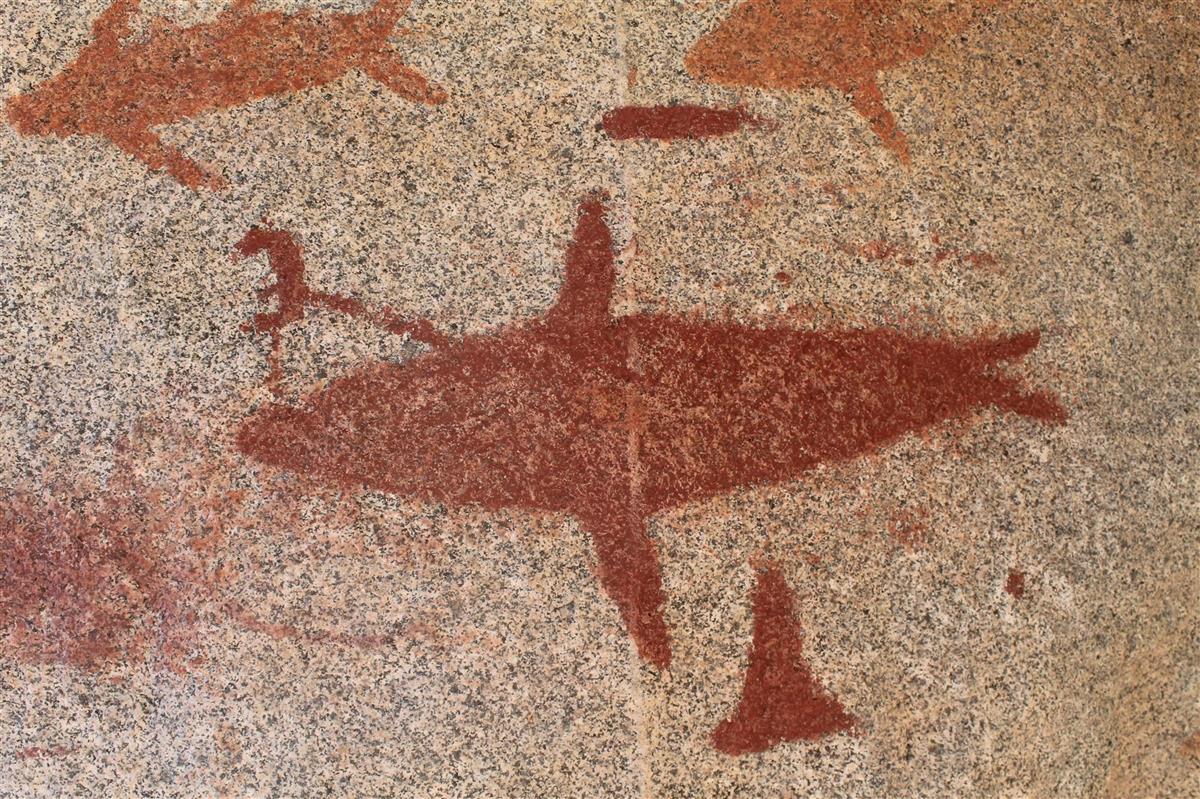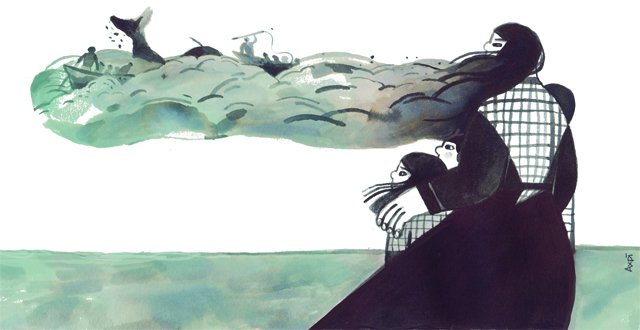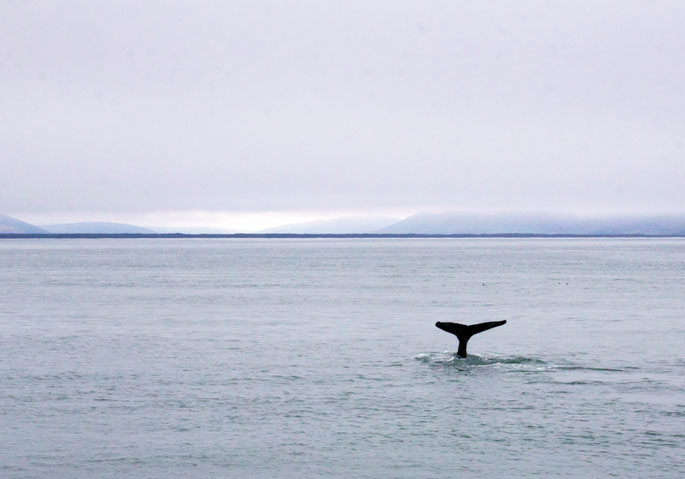Looking at a time that has no history
- The Basques present called the Straits of Belle Isle, where Newfoundland and Labrador have been almost unified for centuries, the Gran Bahia. The fishermen established the seasonal villages between the peninsula and the islands at the entrance of the alleged giant bay to hunt whales and extract their oil. They spent months there before filling the containers with as much oil as possible and heading back to the Basque Country. Red Bay is the most famous port in our country, but Chateau Bay is also home to Basque remains.

The Xateo
This bay on the Labrador peninsula, which can only be reached by boat, has the castle as its symbol. The beautiful basalt mountain that hides the continuous mist gives its name to the whole area, the pentagonal columns that are connected side by side like a giant organ, giving it a phantasmagoric character. However, it is not difficult to imagine why this was the point of reference for sailors from Europe; this stone and watchtower needed to be the first significant mountain to be seen on the shore.
This Libvrv, one of the oldest books in Basque, is the guide to walk on the sea Ixasoco Navigacionecoa, published in Bordeaux in 1677, which explains how to look for new lands. Here Piarres Etxeberria described the rules and navigation routes and it is particularly interesting to learn how to get to one or the other, not the exercises on the map, but the explanations of the area.The coordinates to reach the shore are curious.
“You have Iakite, for you see some great prawns of prawns, larger than marloins, and long necks, for the beggars call them slaves; and some black prawns, for the beggars call them red prawns, for the beggars call them slaves; when you see them, lie down on the staves, and do to them the guards.”
There are also xori xuri and black in Chateau Bay, perhaps the same ones that Etxeberri described. This quiet location was inhabited for decades by 16th century Basque whalers known as Xateo. It is a place that is often mentioned in documents of Oñati, a meeting point that used to be made in the deal with mic mac and innuit. Although they are currently covered, archaeologists found in them ovens, barrels, carpentry and piles of tiles necessary for the whale industry during the excavations carried out in the 80s. As in the Red Bay where the San Juan is submerged, experts confirm that there are also two Basque Naos in the icy waters of this vast bay. The gigantic cost of carrying out research on the site, however, inevitably means handing over the remains of wood that had been sunk for five hundred years.


North of the South
The North-South logic takes on a new meaning in the Great North. Higher and higher, the harsher living conditions are. At the foot of the mountain there is an old cemetery with surprisingly new tombs. The age of the dead denounces the hardness of the environment.
Today only a few buildings remain in the village below the castle. The last traces of life of the inhabitants of the early twentieth century, abandoned to time. The archaeologist Manu Izagirre informed us that people were still present when the archaeological excavations of the ship San Juan were carried out in Red Bay three decades ago. It was already known that the town would be left empty, however, on the fiftieth turn of the last century, when Newfoundland and Labrador joined Canada, as about 300 towns like this were relocated by the government of the Confederation to more populated lands to the south. The State could not guarantee basic infrastructures in populations so remote and encouraged demographic reorganization.




Images by Dennis Minty and Dani Munt.
Looking at the time
With buildings crumbling, wood sheets rotting, bridges breaking down from island to island... With the beginning of June, the icebergs liberated from the glaciers of Greenland are rocking on the water, waiting for the forces of the current, both individually and collectively. The low fog appears and disappears momentarily. The sea is rough and changing. The fine wind comes from the North East. Maybe like decades and centuries ago?
In the face of these deteriorated and sunk worlds, the ideas of the anthropologist Marc Augé’s book Time in Ruins have always seemed stimulating to me. Augé says that looking at the ruins is not about taking a trip through history, but about living the experience of time, feeling pure time. There is no landscape without gaze, without awareness of this landscape. In the absence of a listener, just as the tree that has fallen into the forest has no sound. It is simply the awareness of the moment that has no history, the quick and brief intuition that one feels looking at the spectacle offered by these past worlds.
Ez hartu harririk, ez teila zatirik, ez lorerik… ezer! Gure zapatilen arrastoa da zapalduko dugun lurrean utziko dugun bakarra. Ez egin harri pilarik, etorkizuneko arkeologoen lana baldintzatuko duzue eta. Horixe esan zigun Jason Edmundsek ondare kulturalaren zaintzaren... [+]
Euskal balezaleen triskantza duela ia laurehun urte jazo zen hilketa ikertzea helburu duen dokumentala da. Txuri eta beltzik gabeko istorio bat, zuria esateko hamaika hitz dituen herrian.
Islandian oraindik geratzen da euskal baleazaleen aztarnarik, baita duela 400 urteko triskantzaren oroimenik ere. Bertako buruzagi baten aginduz hil zituzten hainbat arrantzale euskaldun, eta erreportaje honetan kontatu dizugu gertaturikoa. Argazkion bidez iraganean atzera egin... [+]



















